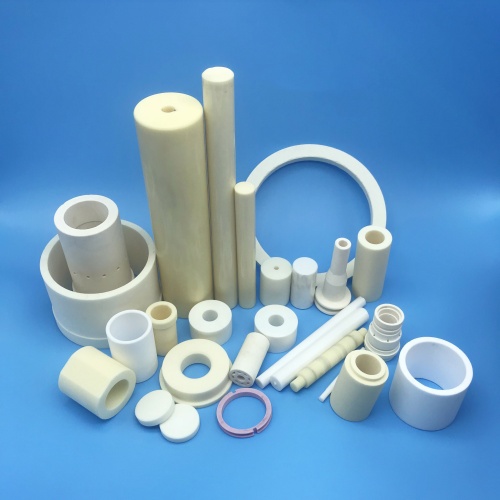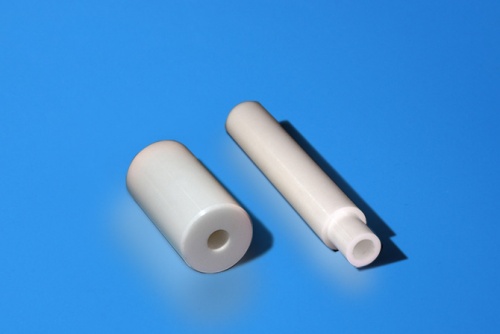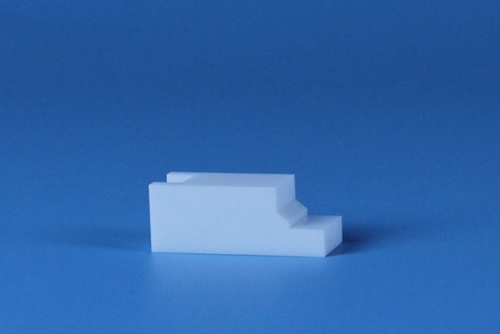What cutting tools are used to process zirconia ceramics
Zirconia ceramics are widely used in aerospace, electronic components, biomedicine and other fields due to their high hardness, high wear resistance, high toughness, excellent corrosion resistance and biocompatibility. However, these excellent properties also make it difficult to process zirconia ceramics, which places extremely high demands on machining tools.

The following are several cutting tools suitable for processing zirconia ceramics and their characteristics.
- Diamond cutting tools
Diamond cutting tools are one of the preferred cutting tools for processing zirconia ceramics. Diamond has extremely high hardness (Mohs hardness of 10), much higher than zirconia ceramics (Mohs hardness of about 8.7), and can effectively cut zirconia ceramics. The main types of diamond cutting tools include:
-Natural diamond cutting tools: have the highest hardness and wear resistance, but are expensive and have poor toughness, suitable for high-precision, small-sized precision machining.
-Polycrystalline diamond (PCD) cutting tools: made by sintering diamond micro powder at high temperature and high pressure, with high toughness and wear resistance, suitable for processing materials with high hardness.
-CVD diamond thick film welding tool: Chemical vapor deposition technology is used to deposit diamond coating on the tool substrate, which has higher hardness and wear resistance, and can be made into complex shapes. - Cubic boron nitride (CBN) cutting tools
The hardness of cubic boron nitride (CBN) is second only to diamond, and it has high thermal and chemical stability, making it suitable for processing difficult to machine materials such as high-temperature alloys and hard alloys. Although zirconia ceramics have high hardness, CBN cutting tools also exhibit good performance in processing zirconia ceramics, especially under high temperature conditions. - Ceramic cutting tools
Ceramic cutting tools are tools made mainly of ceramic materials such as alumina and zirconia. Zirconia ceramic cutting tools have the advantages of high strength, high hardness, good wear resistance, high temperature resistance, and corrosion resistance, making them suitable for processing high hardness materials. Its main features include:
-Good wear resistance: capable of processing high hardness materials that are difficult to process with traditional cutting tools.
-High cutting efficiency: low friction with metal, less likely to produce chip lumps, and low surface roughness.
-High chemical stability: suitable for use in high temperature and corrosive environments. - Hard alloy cutting tools
Although hard alloy cutting tools have lower hardness and wear resistance than diamond and CBN cutting tools, they also have certain applications in processing zirconia ceramics. By optimizing the geometric parameters and coating technology of the cutting tools, hard alloy cutting tools can meet the processing needs of zirconia ceramics to a certain extent.

Comprehensive consideration of tool selection
When selecting cutting tools for processing zirconia ceramics, the following factors need to be considered comprehensively:
-Processing accuracy requirements: For high-precision processing, natural diamond cutting tools or CVD diamond cutting tools should be preferred.
-Processing efficiency: PCD and CBN cutting tools are suitable for large-scale production and can improve processing efficiency.
-Cost factor: Diamond and CBN cutting tools are relatively expensive, but have a long service life and are suitable for processing high value-added products.
-Processing method: For rough machining of zirconia ceramics, hard alloy cutting tools or ceramic cutting tools can be selected; Precision machining is more suitable for using diamond cutting tools.

When processing zirconia ceramics, the type of cutting tool should be selected reasonably based on specific processing requirements, processing conditions, and cost budget to achieve efficient and high-quality processing results.
CATEGORIES
LATEST NEWS
- Petrochemical ceramic injec...
- Zirconia Ceramic Rod Custom...
- High-temperature resistance...
- What is the wear resistance...
- What is the hardness of cer...
- Aluminum oxide ceramic cust...
- What are the main aspects o...
- What are the mechanical pro...
- Thermal properties of zirco...
- What properties should be c...
